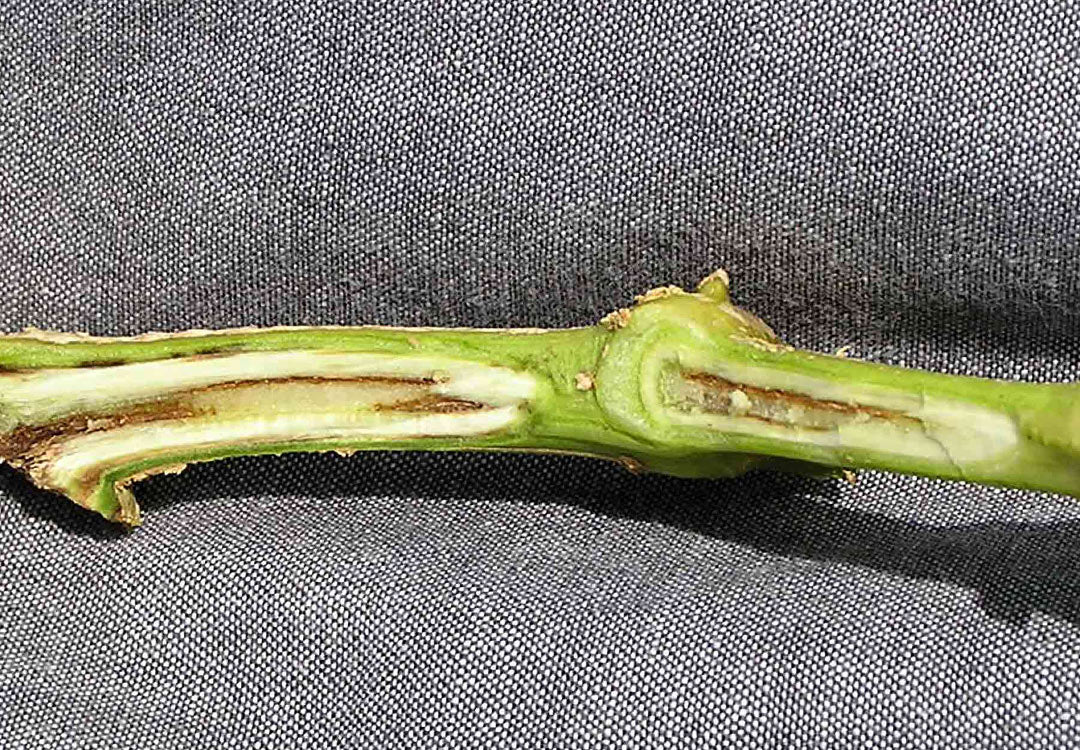
Bacterial infections are one of a gardener’s worst nightmares: unlike most insect pests, bacterial infections are incredibly difficult to control. Often there’s little we can do by the time we are able to identify a disease caused by bacteria.
Unlike humans and other animals, plants lack a proper immune system, so they’re susceptible to a variety of pathogens. However, they do have a molecular system they use to detect microorganisms and to prevent pathogens before they can cause any extensive damage most of the time.
Unfortunately, sometimes the plant succumbs to a bacterial infection, just as humans sometimes do.
When plants are severely attacked by microbial pathogens, it’s virtually impossible to identify the issue before the signs and symptoms become obvious. Unlike insects, these microbes are invisible to the human eye, so we’re usually only able to notice them after the plant starts showing symptoms either in the form of morphological changes or by drying up and ultimately by dying.
It’s easy to mistake these symptoms for other problems, both biotic and abiotic. Many bacterial symptoms can resemble issues (biotic and abiotic) including insects, fungus, virus, over-watering, lack of sunlight, or nutrient issues.
How Can We Identify Bacterial Infections?
Bacterial infections can show different symptoms that are seriously easy to misdiagnose so you may find that you need to send a sample off to a lab to make a truly positive diagnosis.
If you see any of the symptoms below and can’t rule any other health problems that are easier to treat, consider getting rid of the plant altogether and burning it (or throwing it in the garbage) to avoid infecting other plants.
Bacterial Spots are considered as one of the most common symptoms of bacterial disease, where spots appear on the leaves, stem, fruits and blossoms. If the spots appear in the plant body and advance rapidly we call it a “blight”. In many cases these spots have a rotten or fishy smell, and are water-soaked and limited between the leaf veins, with an angular appearance. It can be hard to differentiate between fungal spots and bacterial spots.
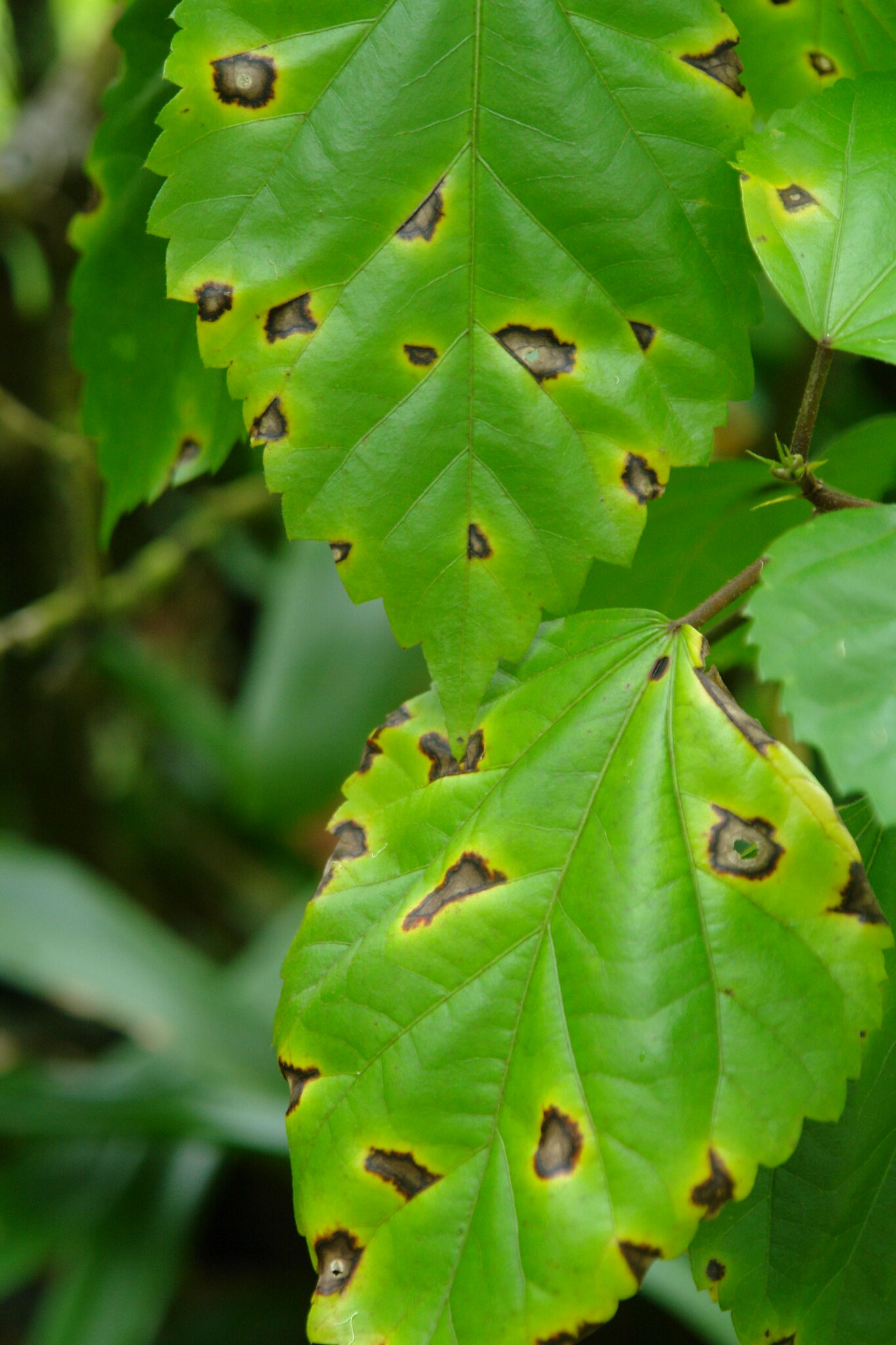
Bacterial spot on hibiscus leaves. Image source
Cankers are wound-like infections that are slightly sunken and dark brown in colour and are common in many fruit trees. Bacteria can cause these cankerous wounds in trunks, twigs, branches and stems, though cankers can also be caused by mechanical damage, such as a car crashing into the tree.

A bacterial cankerous wound on a cherry tree which could easily be mistaken for mechanical damage, such as an animal having a munch or a car running into it. Image source
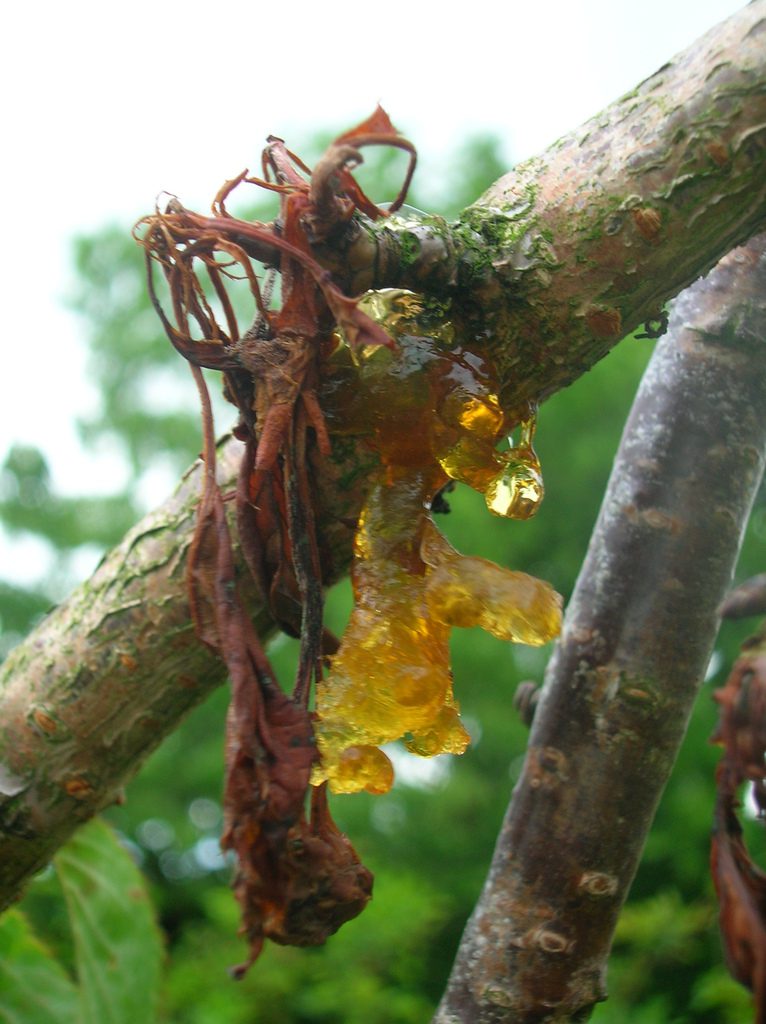
Bacterial canker on a cherry causing gummosis, the secretion of a gummy substance. Yum. Image source
Bacterial gall is another common disease that is caused by bacterial infection. It first appears as small round overgrowths on the root or stem. As the disease develops the colour of the plant will become dark brown, rough, and woody. Sometimes the gall can constrict vascular tissue, causing part of the plant to die.
Bacterial wilt is a symptom mainly seen in vegetables and ornamental plants, and will often come with yellowing (chlorosis) and necrosis of leaves before dying. In some cases, bacterial ooze seeps out either through the stomata (pores in the leaves) or through cracks on the surface of infected leaves.
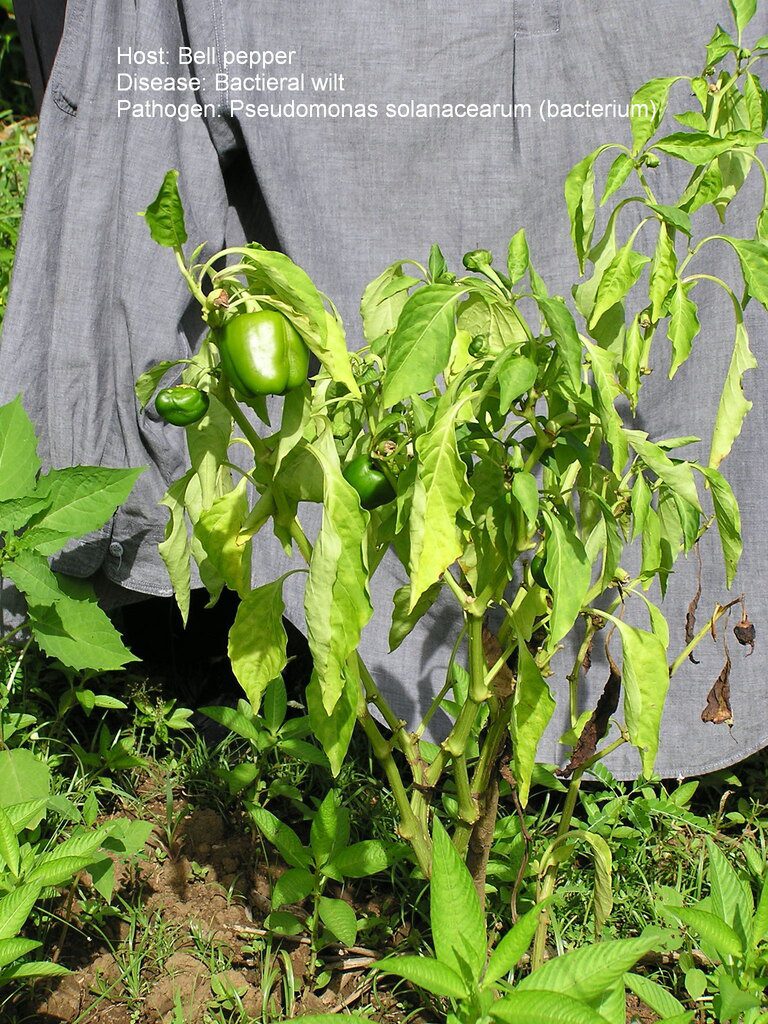
Bacterial wilt and discolouration (chlorosis) on capsicums. Easily mistaken for water issues, lack of nutrients or glyphosate spraying. Image source
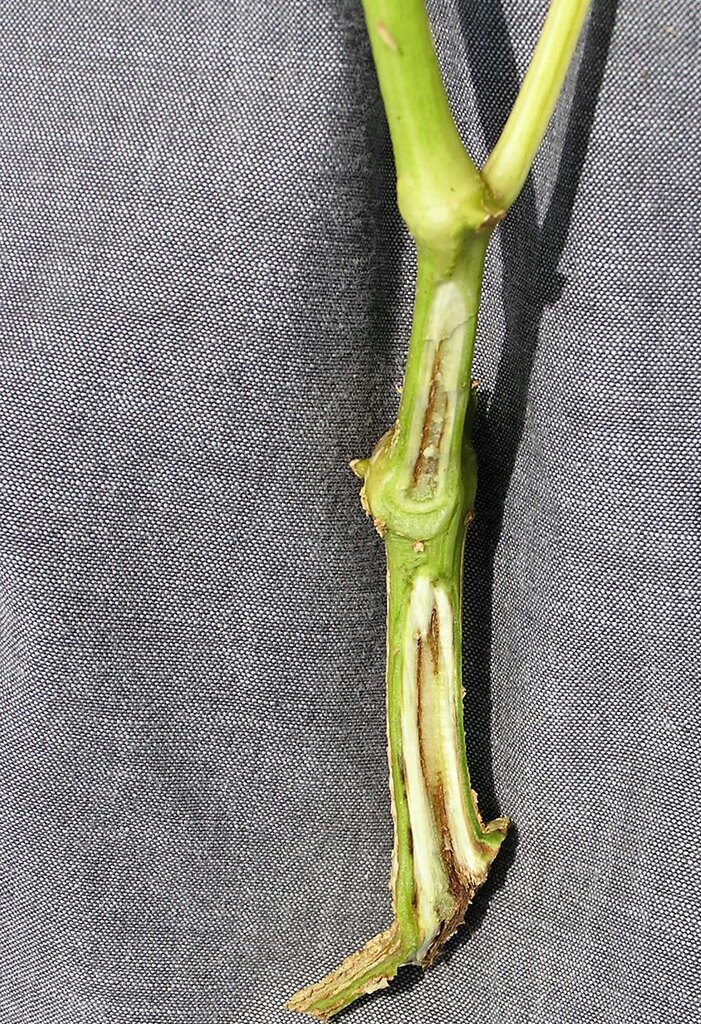
Cross section showing necrotic vascular tissue, no wonder this capsicum plant was wilting. Image source
Yellow to dark brown discolouration appearing on the leaves is another sign of a possible bacterial infection. As the disease progresses it infects the entire leaf which eventually turns dark brown with necrosis (tissue death). In later stages the plant gets completely dry and eventually dies.
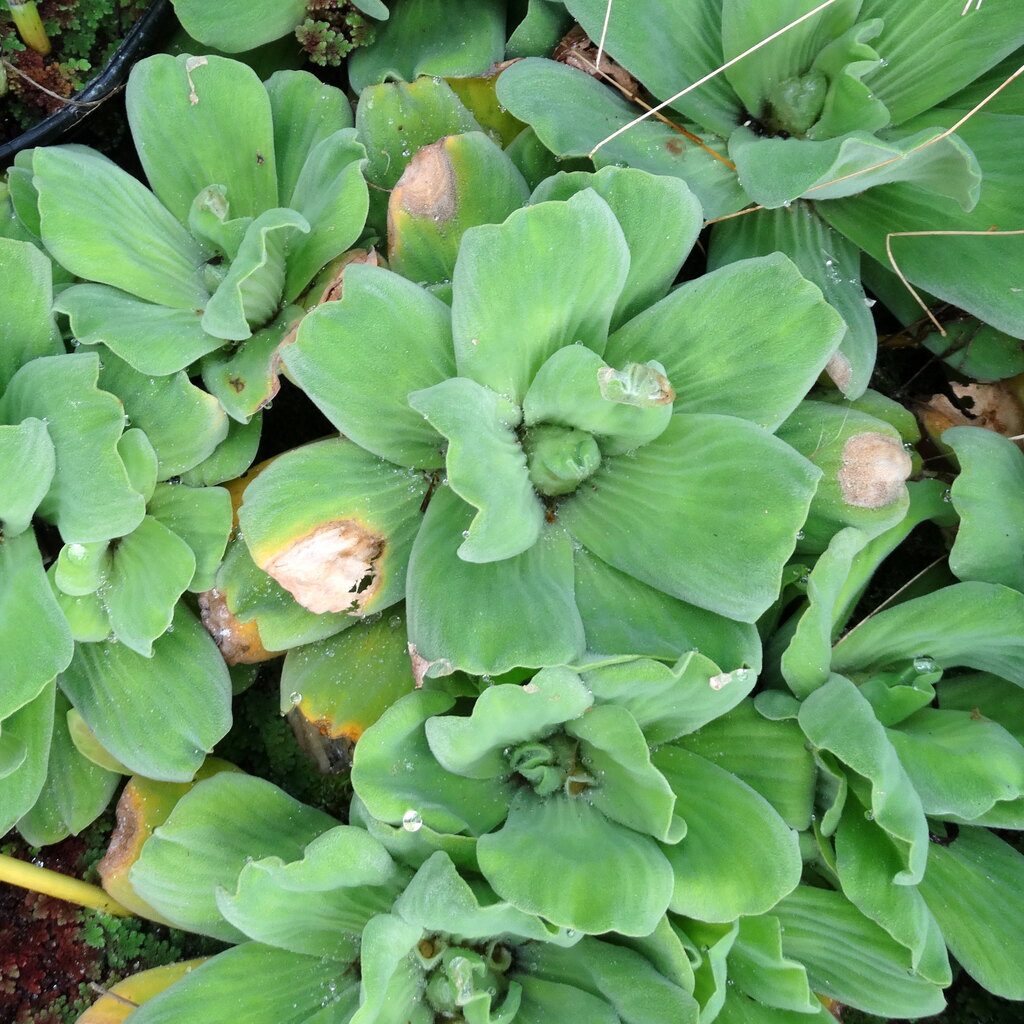
Bacterial leaf blight on water lettuce, an aquatic weed found around the world. Image source
Although fungal diseases are more common in plants, bacteria cause problems that are more difficult to control. Make sure to always pay attention for disease symptoms on your plants and be prepared to make some sacrifices, whether that be removing the plant or applying chemicals that kill off beneificial organisms.
7 Natural Ways You Can Manage Bacterial Problems
Bacterial diseases suck. Once symptoms appear it’s often considered too late to save the plant, as the bacteria can quickly make their way through the whole system before any signs are easily seen. Below is a list of 7 bacterial management tips that will be helpful in avoiding bacterial infections:
-
Go for disease-resistant varieties, particularly for those diseases that appear in your garden annually.
-
Monitor your plants regularly and use predictive models.
-
Crop rotation is effective not only for bacterial pathogens but also for insects and fungal attacks. Rotating crops every year while planting drastically reduces your risk of many common plant pathogens and pests.
-
If you notice that some plants or plant parts are already damaged, the best thing to do is isolate and destroy them (in fire or throw them in the rubbish – not the compost). Prune infected leaves, but avoid excessive handling of the infected because it cannot be recovered. Err on the side of caution and remove more than you think is necessary; sometimes the whole plant has to go.
-
Grow healthy plants by providing proper light, water and nutrients. Each plant should be given enough spacing in order to ensure air circulation and add organic matter to you garden to enhance soil fertility.
-
Try to water your plants in the morning so that they will get dry by evening because moist and wet conditions are most favorable for the growth of both fungi and bacteria.
-
It may be possible to save your plant by applying bactericides. Organic options include horticulture oil, sulfur and fixed copper. These are mildly effective bactericides that are friendly to the environment and human health as well.
Chemical Application
If you’re serious about saving a plant infected with bacteria, your best option will be a chemical bactericide. Don’t use this option lightly, because it will do harm to many of the beneficial organisms that live alongside your plant.
Sometimes it’s better to remove an infected plant than to try to fix it, however sometimes you really need to save a particular plant and you’re willing to sacrifice the beneficial microbes.
-
Copper-containing compounds and Bordeaux mixture (copper sulfate and lime) are usually what’s used for bacterial diseases.
-
Antibiotics like tetracycline are also commonly used, and are injected into mature plants on a routine schedule to be effective. If this option is used in the early development of symptoms, it’s more likely to be effective. If used in the later stages, even these antibiotics are often unable to control the disease.
They can be used as a last resort for plants that you’re very attached to, but don’t frequently use harsh chemicals in your garden because they are not only harmful for the environment, but the harmful bacteria also develop resistance to these bactericides meaning that we encourage diseases to evolve to become much stronger and harder to control, not to mention that these bactericides kill beneficial microbes that our plants rely on for optimal health.
Conclusion
Don’t hate the bacteria too much; they’re only doing their job, which is to remove weak plants from the ecosystem. Plants that are thriving in their natural conditions with plenty of the right sort of composted organic material, suitable soil conditions and are popular with beneficial microbial organisms are much more resilient against almost all threats.
Where possible, use cultural and physical methods like choosing the right plant for the right place and physically destroying infected plants.
Where To From Here?
You can start by reading up on a few of the other blogs I’ve written about plant health problems. Or, perhaps you’d like to start a new chapter in your horticultural learning and open a previously unexplored topic.
